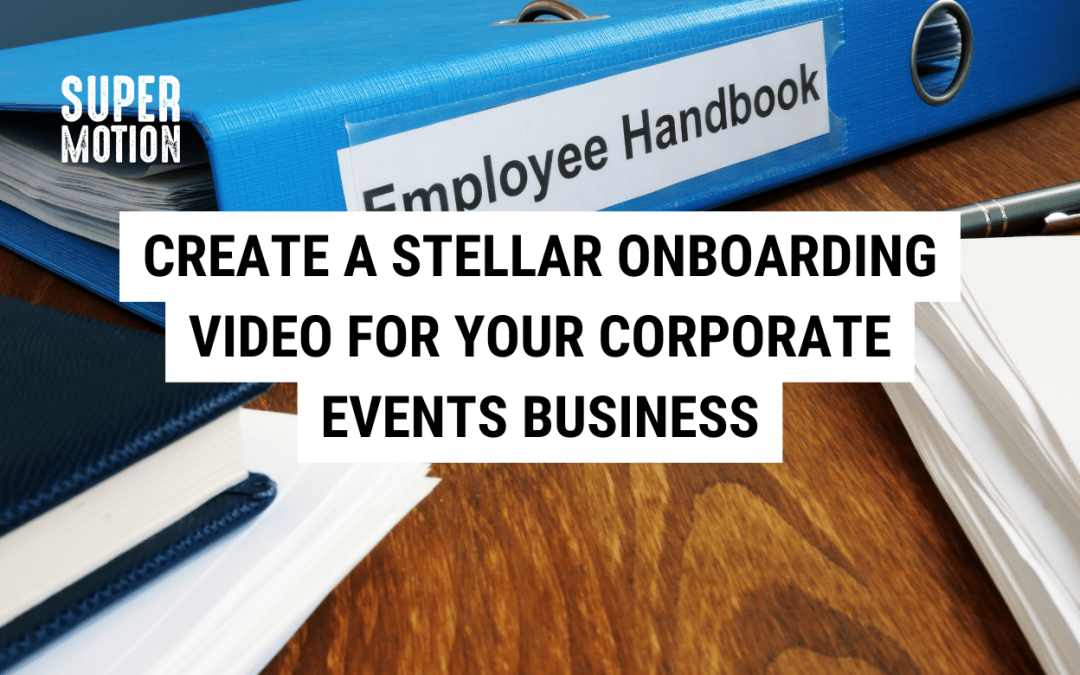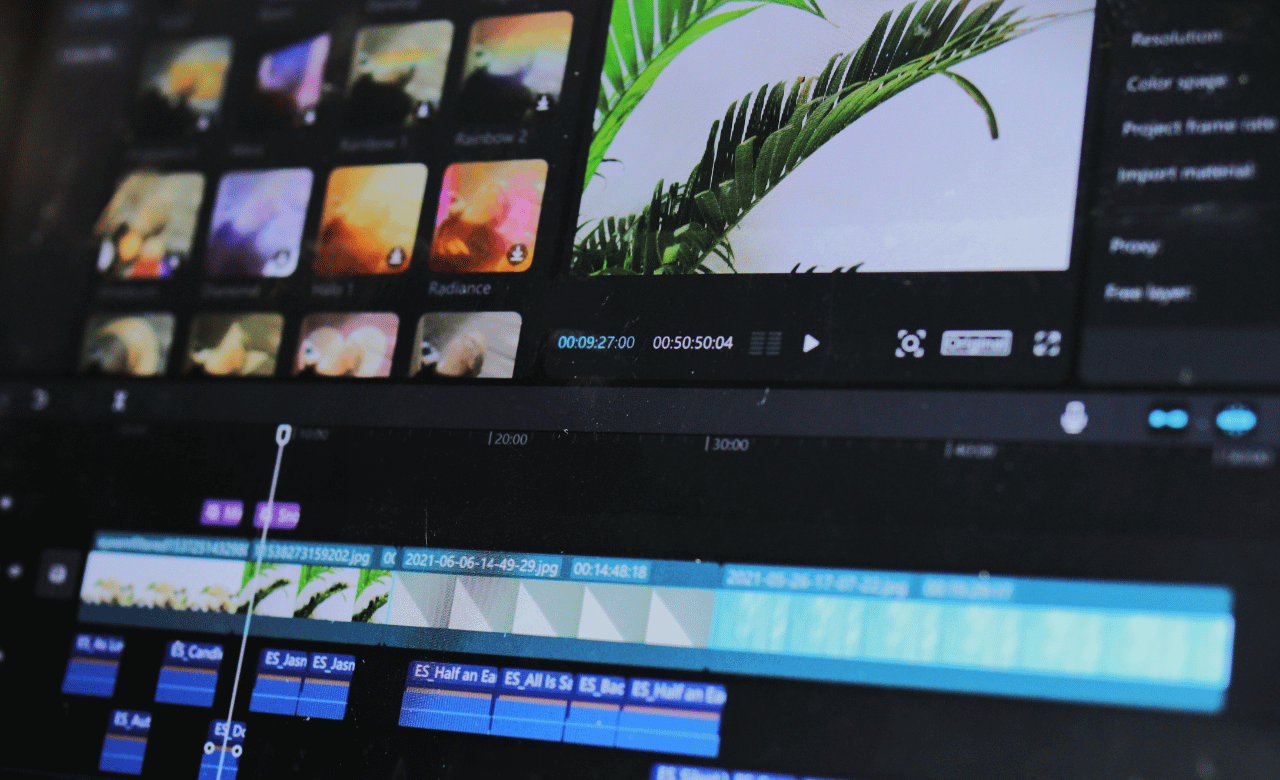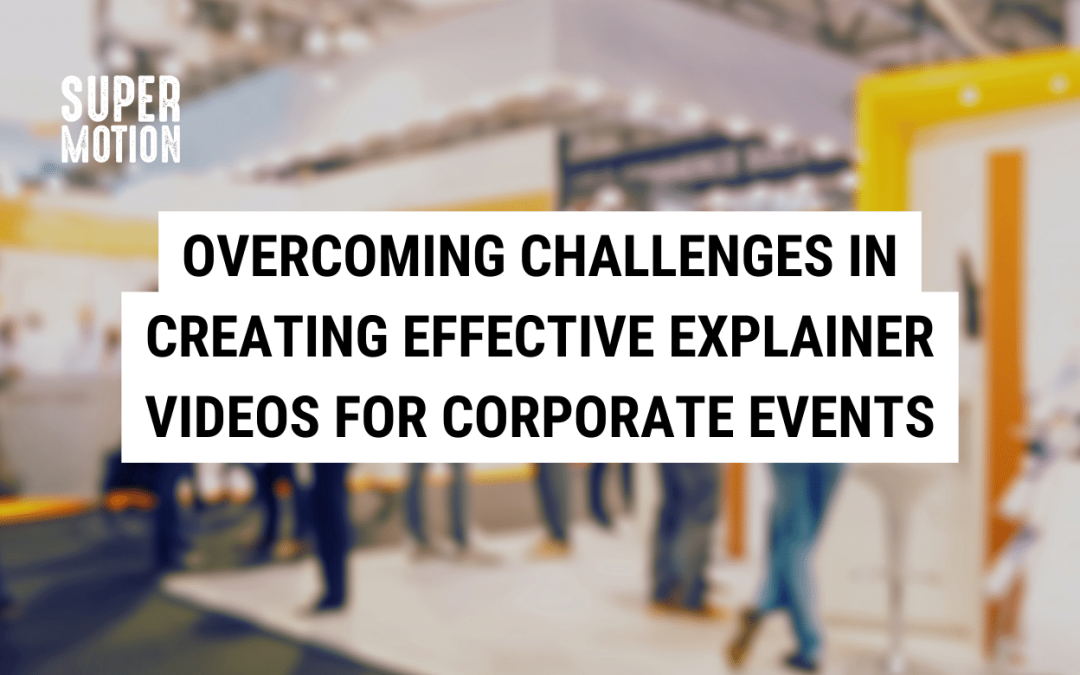
Create a Stellar Onboarding Video for Your Corporate Events Business
Create a Stellar Onboarding Video for Your Corporate Events Business
Have you ever thought about giving your onboarding process the Hollywood treatment?
Onboarding videos can help you to set up your new employees for success, helping to deliver a sense of clarity, confidence, and excitement about their new role.
As a savvy Corporate Events HR Manager, you understand the critical importance of the onboarding process. You know that you only get one chance to make a great first impression on your new employee. But what sets an onboarding video apart as a standout tool for your induction process?
Crafting an onboarding video that truly resonates with new employees and aligns them with your company’s vision and values is an art. It must balance information with emotion, professionalism with personality, and convey a vision of shared success.
In this guide, we’ll unravel the elements that can turn your onboarding video into a compelling narrative that connects with your newest team members.
Understanding the Core Elements of Employee Onboarding
Successful onboarding videos all share core elements that fit together to create a compelling and memorable onboarding experience that help your new employees get off to a great start in their new role.
Here are the essential elements to create a compelling onboarding video:
1. Showcasing Company Culture and Values
Your employees are the living, breathing advertisements of your company’s culture. Therefore, your onboarding video must dedicate time to showcase what your culture actually looks like in action. It’s less about telling and more about showing — illustrate your values through real-life company events, team interactions, and the day-to-day working environment.
2. Introducing Team Members and Key Contacts
The transition into a new team is often one of the most nerve-wracking parts of the onboarding process. Ease this by personalising the experience. Include interviews and spotlights of team members, creating familiarity before day one.
3. Explaining Key Projects and Events
Give new hires a peek behind the scenes of significant projects and upcoming events. Not only does this get their interest, but it also demonstrates the strategic importance of their work and how it aligns with company goals.

4. Outlining Marketing Strategies and Brand Guidelines
Employees act as brand ambassadors whether they realise it or not. Help them fully understand your brand’s promise by explaining marketing strategies and brand guidelines.
5. Demonstrating Tools and Software
Introduce your tech in a user-friendly way. New employees appreciate a head start, and you’ll save time by covering off the basics before their handover.
6. Guiding Through Essential Processes and Workflows
Detail step-by-step processes for common tasks and workflows. This reduces initial overwhelm and empowers the newest members of your team to start contributing sooner.

7. Setting Clear Expectations and Objectives
New employees often wonder if they’re on the right track. Set clear expectations and objectives early, giving a roadmap for their first days and beyond.
8. Offering Learning and Development Resources
An indication of growth opportunities is a powerful incentive for new talent. Showcase in-house training, mentorship programs, and other growth-boosting initiatives.
9. Support and Questions
Finally, your video should end with a strong message of support. Detail who new hires can reach out to with questions and how they can access help when they need it most.

Things To Keep In Mind
Now that you’re familiar with the core elements that make up a successful onboarding video, here are some other things that are also important to keep in mind:
How Long Should the Video be?
The ideal length of your onboarding video is around 10-15 minutes. Beyond this, attention may start to wane. This doesn’t mean you need to restrict every detail — you can always use this as a teaser for the comprehensive onboarding package new hires will get on their first day.
Brevity and Clarity
Be laser-focused on your content. For every point, ask yourself, ‘Does this need to be in the video, or can it be part of a hand-out or live session?’ Less is more!

Storytelling to Engage
Weave the necessary messaging into an engaging story. Start with a hook, describe the challenge of the new role, and conclude with how the new hire now plays an essential part in overcoming those challenges. Think of it more as a documentary with planned spontaneity, rather than a strict list of dos and don’ts.
Quality over Quantity
A video’s production quality reflects your investment in the employee experience. It doesn’t need Hollywood budgets, but it does need to be professional, well-lit, and audibly clear.
Engaging with the Audience
Remember, an engaging video doesn’t just come from its visual appeal — it’s about speaking to your audience in a way that resonates. Craft a script that’s personable and conversational.
Engage with your audience, address common concerns, and highlight the elements that make them feel part of the team from the very start.

Every Day is a School Day
Onboarding videos are a great asset to your onboarding process but they’re not a one-shot wonder. It’s important to follow-up regularly and support your new employee to achieve success in their new role.
Reviews
Arrange follow-up sessions or review meetings where new employees can ask questions and seek clarification on anything they didn’t fully grasp.
Continuously Seek Feedback
Seek feedback on the video and your onboarding process — were there parts that resonated more? Did every part of the process feel relevant and helpful? Use the insights to improve your onboarding process over time.
Integration into Company Resources
Ensure your onboarding video isn’t a standalone asset. Refer back to it in subsequent training sessions and incorporate its content into company knowledge bases.

Want to Enhance Your Onboarding Process with Video?
If you’re looking to craft an onboarding video that sets the gold standard for new employees, learn how Super Motion can help you. Book a free 30-minute strategy call to find out what’s possible for your business.



















Recent Comments